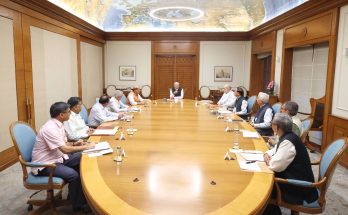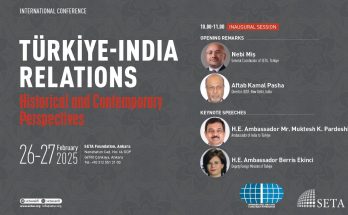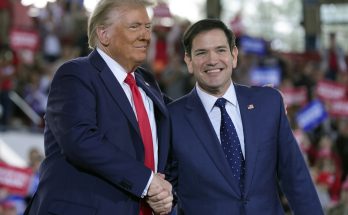I ndia recently played host to Prince Salman bin Abdulaziz Al Saud — crown prince, deputy prime minister and defence minister of Saudi Arabia. The Feb. 26-28 visit was of the highest level from Saudi Arabia since King Abdullah bin Abdulaziz Al Saud came in January 2006 as chief guest on the country’s Republic Day celebrations. The trip by the Saudi crown prince followed a series of high-profile visits by leaders of the Arab world, which encapsulates renewed vigour in India’s diplomacy with the energy-rich Middle East.
ndia recently played host to Prince Salman bin Abdulaziz Al Saud — crown prince, deputy prime minister and defence minister of Saudi Arabia. The Feb. 26-28 visit was of the highest level from Saudi Arabia since King Abdullah bin Abdulaziz Al Saud came in January 2006 as chief guest on the country’s Republic Day celebrations. The trip by the Saudi crown prince followed a series of high-profile visits by leaders of the Arab world, which encapsulates renewed vigour in India’s diplomacy with the energy-rich Middle East.
Why West Asia Matters: Look Middle East
India’s cumulative bilateral trade with the Arab countries is valued at over $110 billion and the region is home to around 7 million Indians. India’s foreign remittance from the Gulf Cooperation Council (GCC) countries was $29.7bn in 2011. The region also caters to 70% of India’s energy imports. The Arab spring has presented India with an opportunity for greater engagement with the region. Coming as it does on the heels of India’s ‘look west’ policy Indeed, India is helping with institutions and knowledge-building in nascent democracies like Egypt. The GCC countries, too, are looking for non-Western economies to invest their surplus funds, especially given their recent disenchantment with the US role in the region. India, therefore, becomes a natural choice for playing a leading role, especially given its IT and technological expertise with its pool of skilled but cheap human resources. Defence ties between India and the GCC are also set to increase.
 The ties between India and Saudi Arabia assume special significance in this context. The official visit of Prime Minister Manmohan Singh to Riyadh in 2010 and the Riyadh Declaration signed on 28 February, 2010 elevated the bilateral engagement to ‘Strategic Partnership’ covering security, economic, defence and political areas. Saudi Arabia is India’s largest crude oil supplier and has promised India two decades of uninterrupted oil supply. Saudi Arabia is India’s fourth largest trading partner and bilateral trade in 2013 exceeded 43 billion USD. Apart from religious and emotive resonance Saudi Arabia has for India’s large Muslim community, the kingdom is also host 2.8 million Indians – the largest expatriate community in that country.
The ties between India and Saudi Arabia assume special significance in this context. The official visit of Prime Minister Manmohan Singh to Riyadh in 2010 and the Riyadh Declaration signed on 28 February, 2010 elevated the bilateral engagement to ‘Strategic Partnership’ covering security, economic, defence and political areas. Saudi Arabia is India’s largest crude oil supplier and has promised India two decades of uninterrupted oil supply. Saudi Arabia is India’s fourth largest trading partner and bilateral trade in 2013 exceeded 43 billion USD. Apart from religious and emotive resonance Saudi Arabia has for India’s large Muslim community, the kingdom is also host 2.8 million Indians – the largest expatriate community in that country.
The visit of the crown prince saw the two sides sign a Memorandum of Understanding on defence cooperation for the ‘exchange of defence-related information, military training and education as well as cooperation in areas varying from hydrography and security to logistics’.
The Syria Puzzle
More significantly, the prince’s visit to India came soon after his trip to Pakistan. The Saudi-Pakistan partnership is already at work in the region. It is reported that Pakistan’s military support may be sought to overthrow the Bashar al- Assad regime in Syria. The Saudis, together with other gulf countries like Qatar and Kuwait, have been supporting the Syrian opposition with arms and funds. Russia and Iran, on the other side of the divide, have solidly stood behind the al-Assad regime. The US’ reluctance to intervene militarily in Syria has strained the Saudi-US ties. And in Pakistan the Prince had again referred to the UN resolutions on Kashmir.
What are India’s options in this context?
For one the Indo-Saudi ties are no longer seen through the India-Pakistan prism. Therefore, there was no reference to Kashmir during the Prince’s visit here.
Next, India, as was in the case in Libya, has always been against any form of foreign intervention in Syria. At the same time, in spite of its membership within the BRICS grouping, India’s position has been closer to that of Russia and China. So for instance, in a number of security council resolutions on Syria, when India has been as a non-permanent member on the council, it has abstained from voting. The BRICS countries in the Durban Declaration in March last year called for ‘a Syrian-led political process leading to a transition’. India’s position has been more calibrated as India’s geopolitical situation is different from that of Russia or China. This, however, leads India to be perceived as being somewhat Janus-faced in the Arab world. That does not automatically mean that India should start supporting the Syrian rebels. On the contrary, India should refrain from taking sides. There is much anger on the Sunni streets against the Assad government. And much of this anger is legitimate.
The civil war in Syria began initially with peaceful protests, which were met by bullets. On the other hand the Syrian rebellion has turned out to be an ill-conceived act, which has got corrupted with the induction of extremist and terrorist groups. While both the US and Russia are losing credibility with one or the other side, India should be perceived to be honest and impartial. For this it should not be seen to be taking sides. And while continuing to oppose all external intervention in Syria, it should not hesitate to take an impartial stand – which means not to shy away from criticism where it is due. That will truly show up India as a supporter of ‘Arab rights’ rather than of a single regime or group.
Aditi Bhaduri can be followed on Twitter @aditijan
Author Profile
Latest entries
 DiplomacyJuly 21, 2015Arabs hold the key to defeating the Islamic State
DiplomacyJuly 21, 2015Arabs hold the key to defeating the Islamic State DiplomacyApril 26, 2014Hamas-Fatah reconciliation: What it means for peace in region
DiplomacyApril 26, 2014Hamas-Fatah reconciliation: What it means for peace in region India and the WorldApril 23, 2014Electoral battle rages on in India: But where are real issues?
India and the WorldApril 23, 2014Electoral battle rages on in India: But where are real issues? DiplomacyMarch 12, 2014India’s ‘Look Middle East’ policy poised for upswing
DiplomacyMarch 12, 2014India’s ‘Look Middle East’ policy poised for upswing







